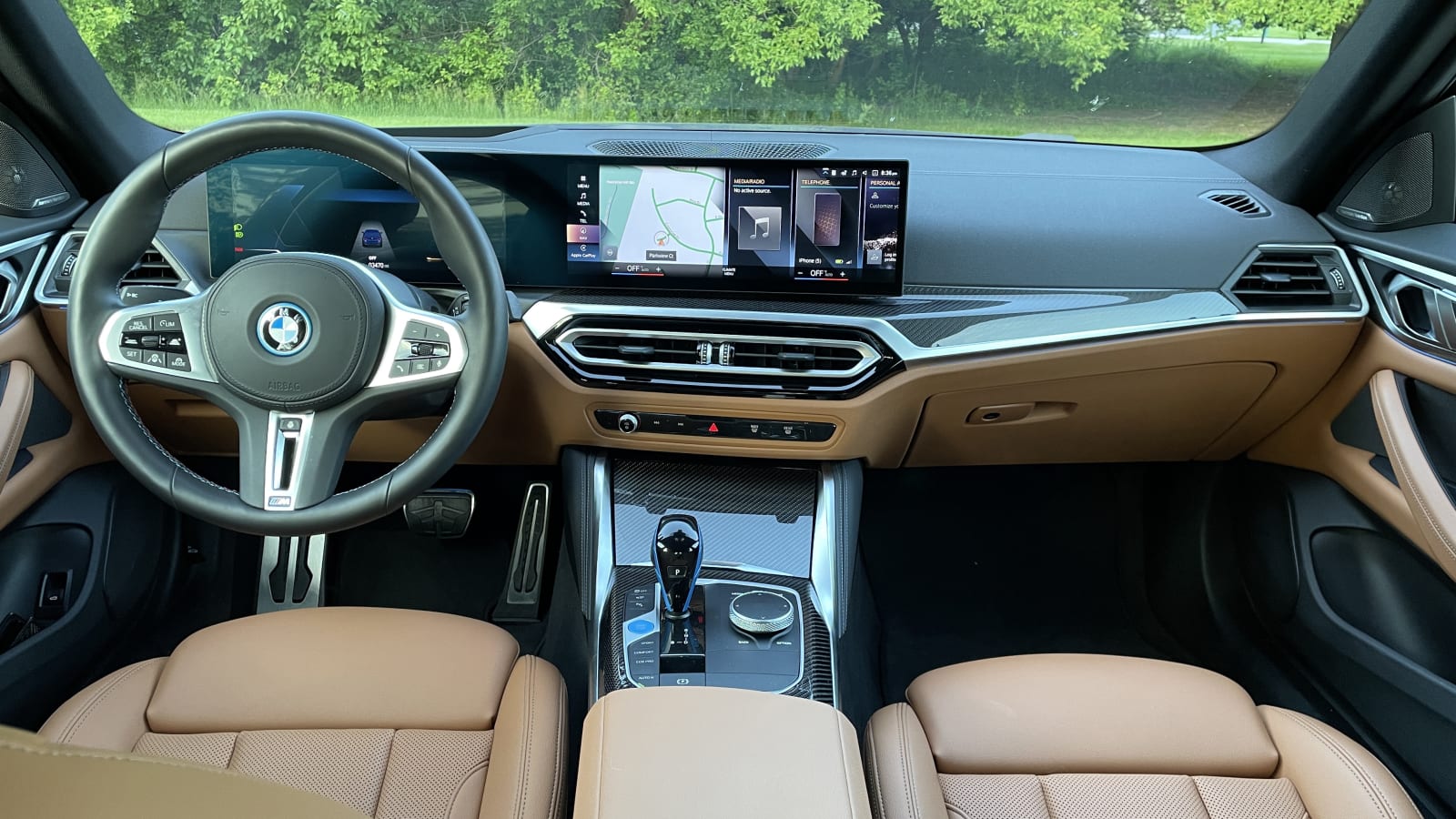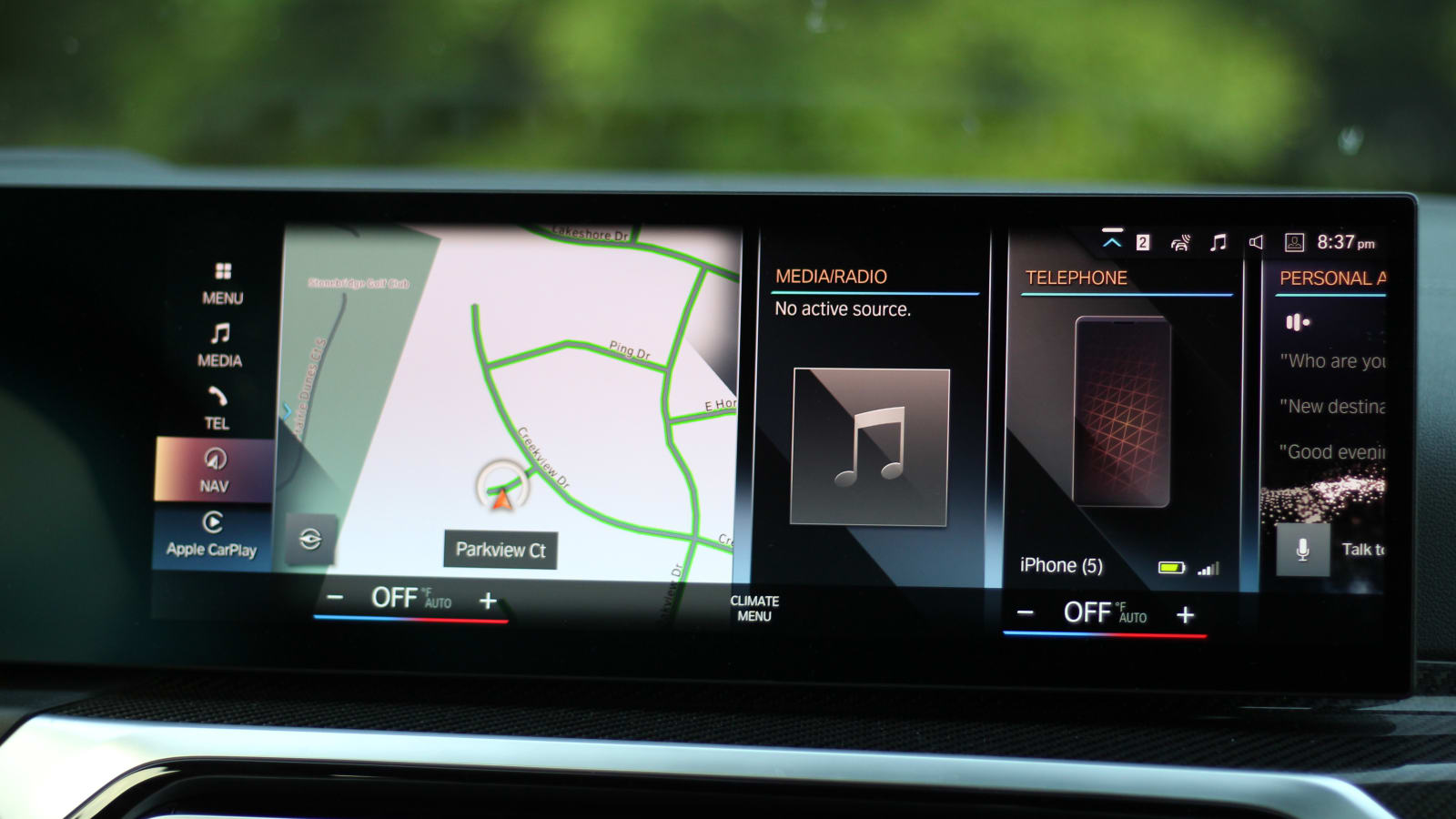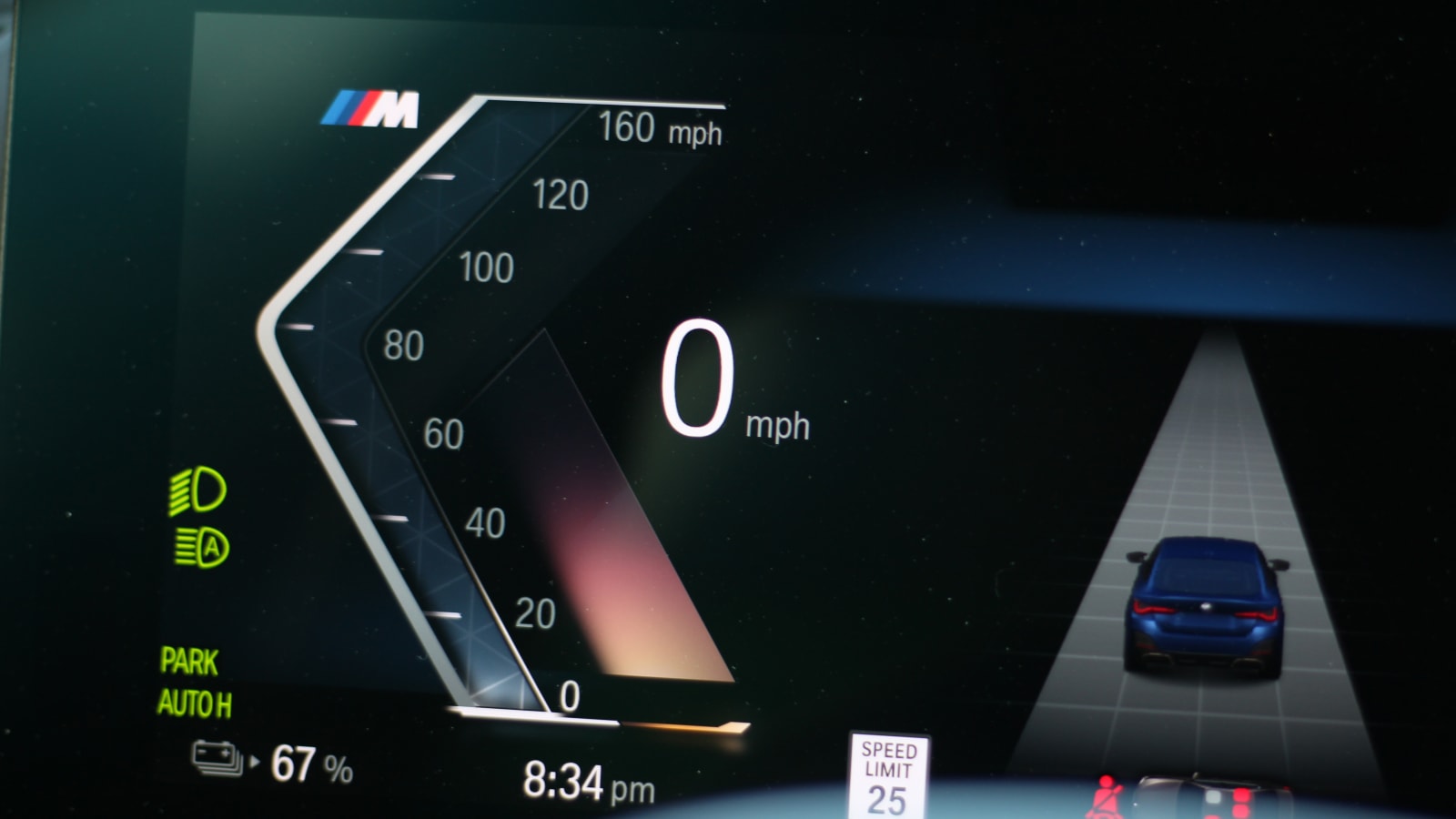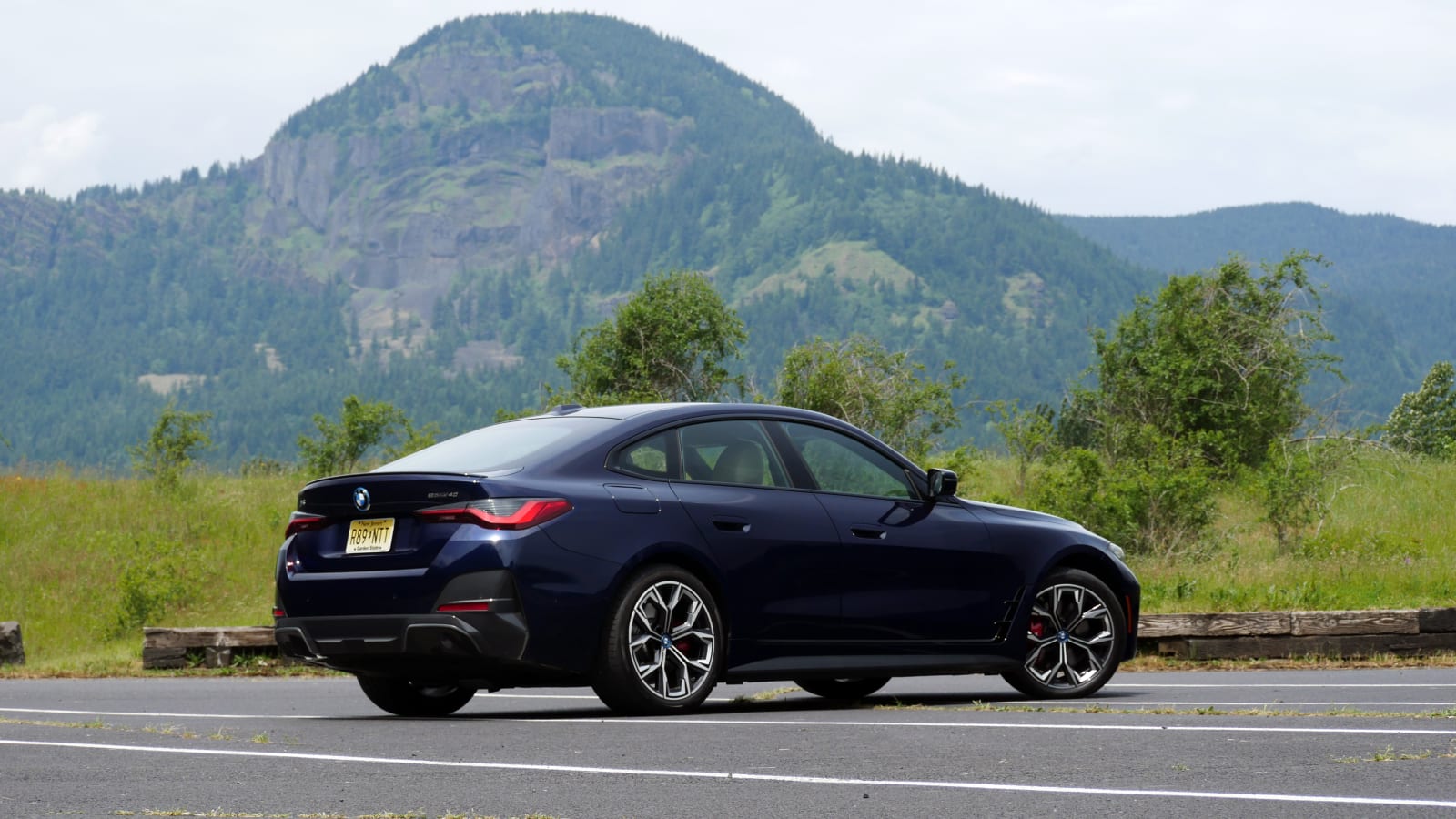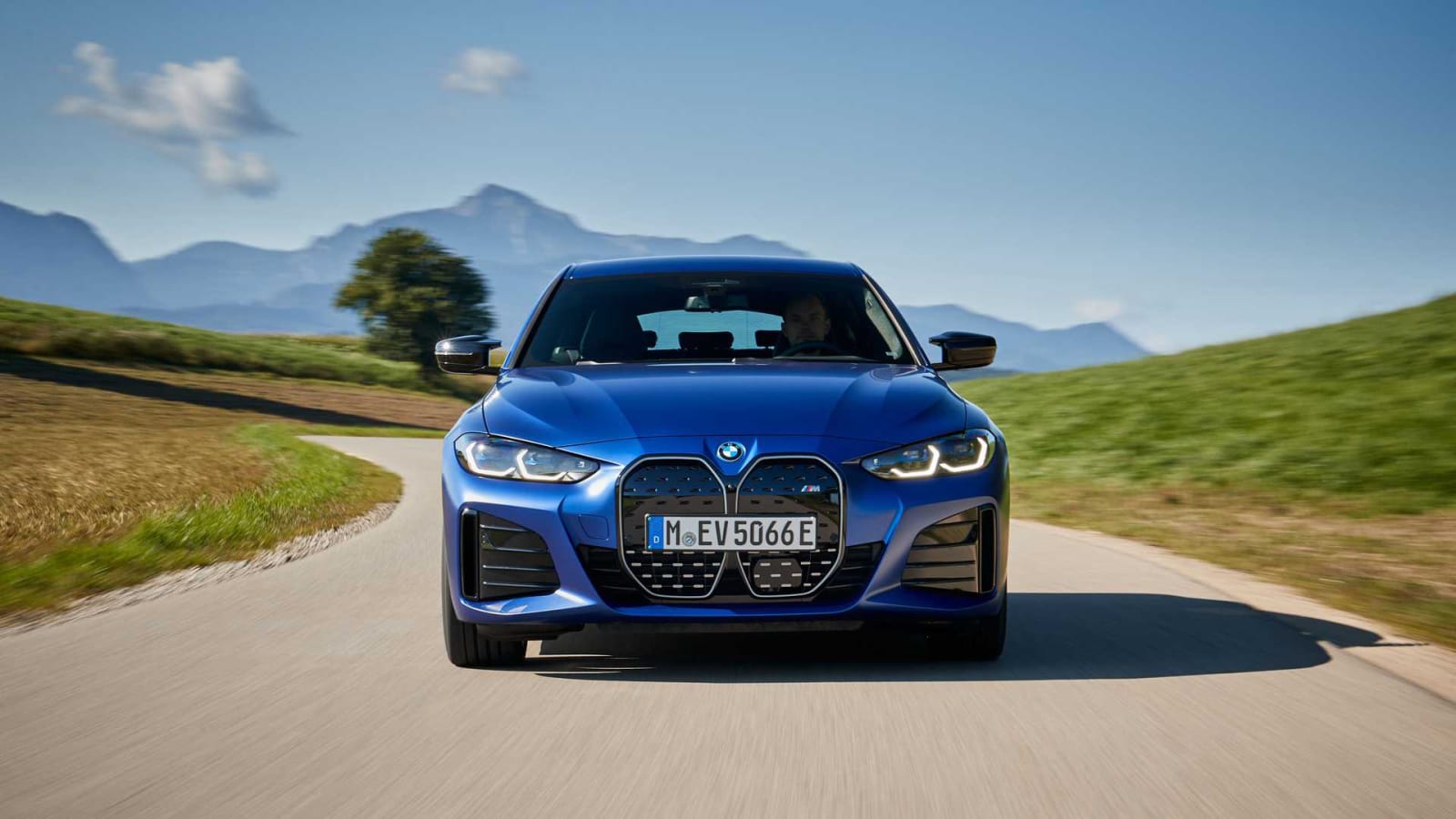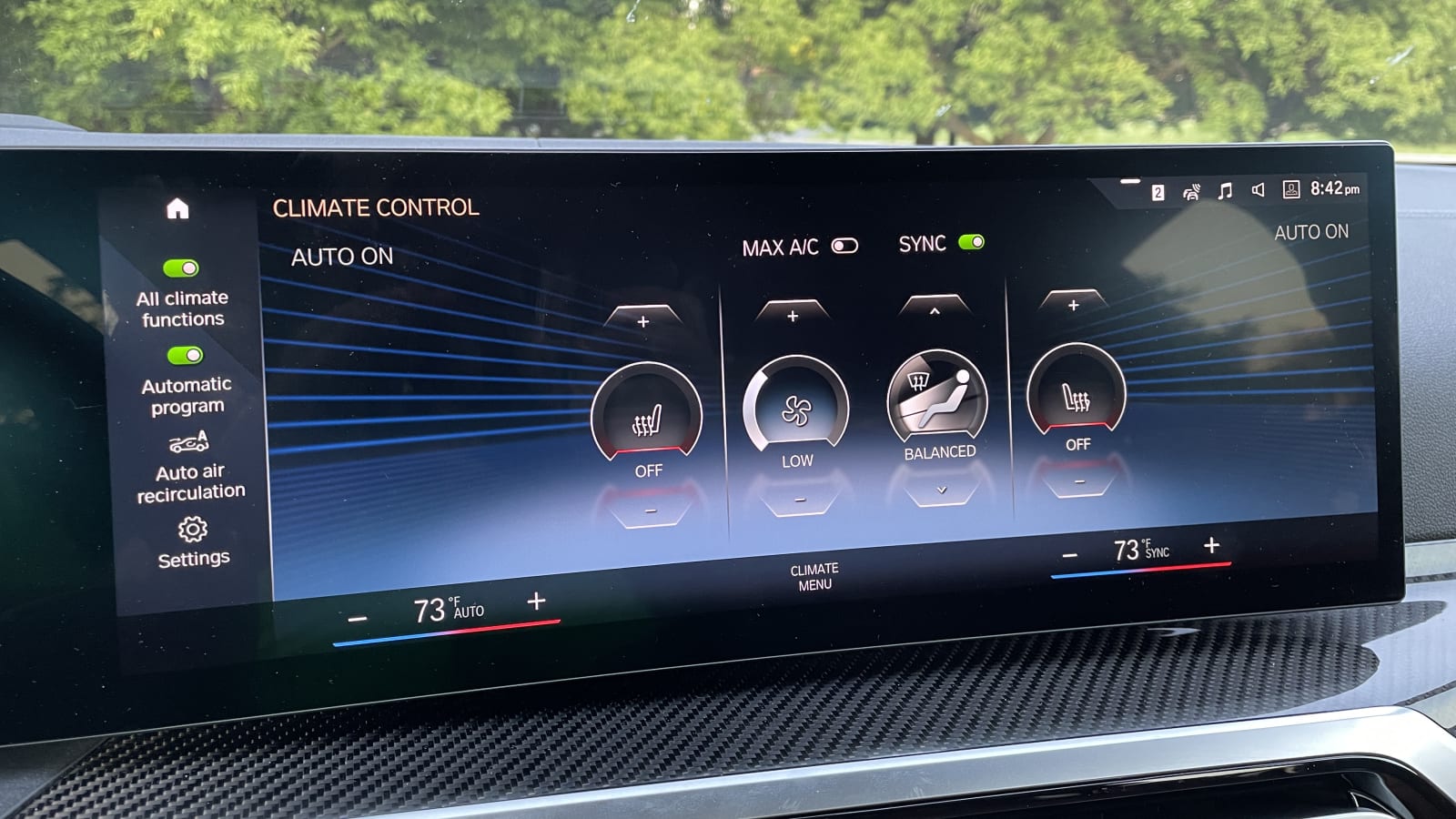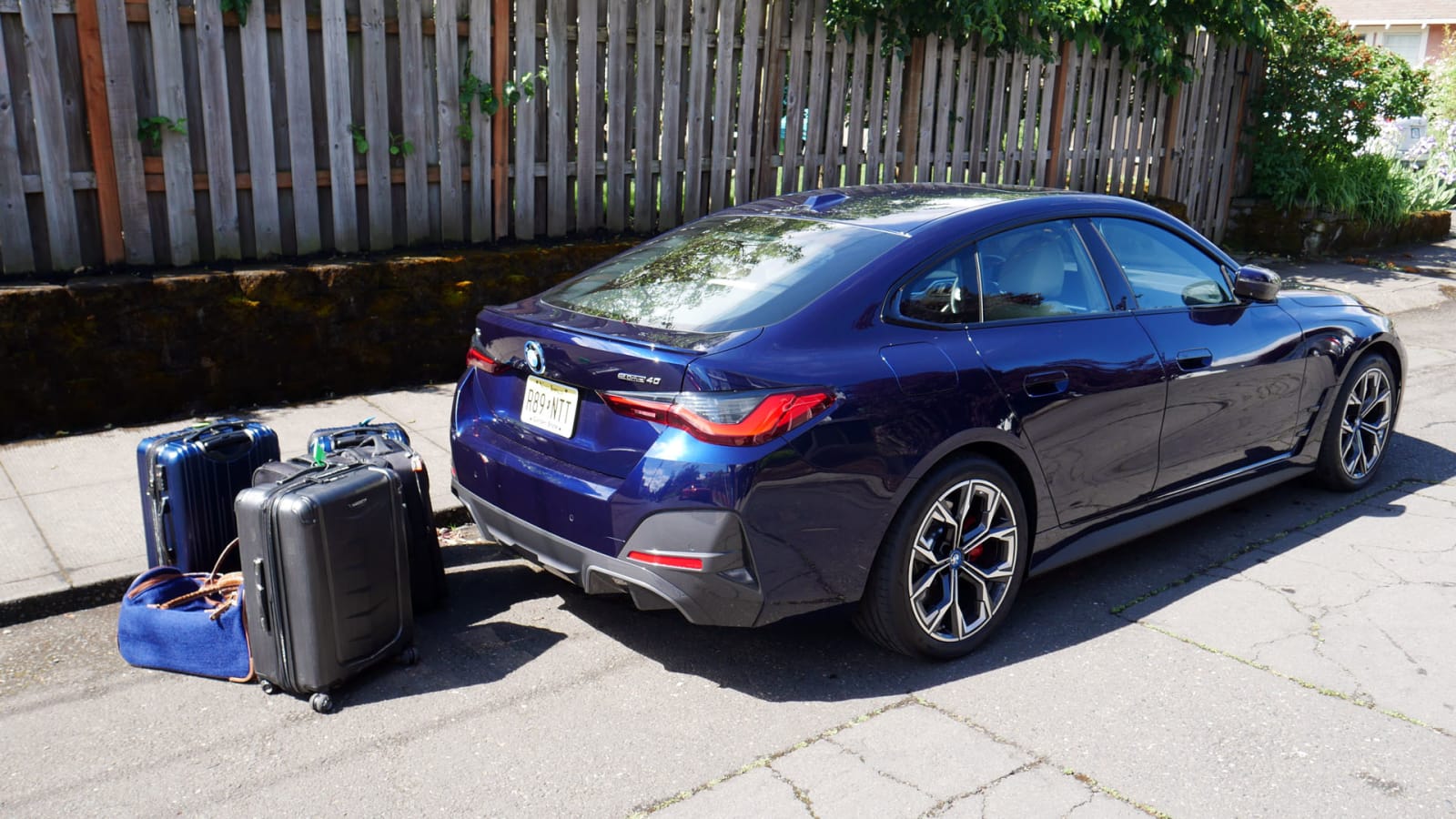2022 BMW i4 Review | Pleasingly normal, delightfully fast
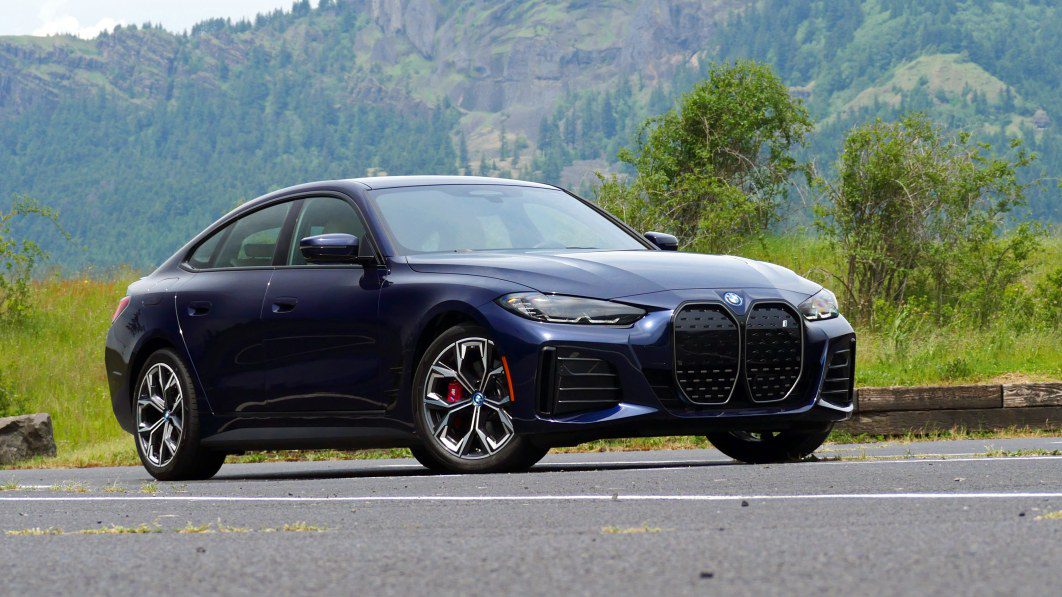
The 2022 BMW i4 is effectively a fully-electric 4 Series Gran Coupe. It’s easily the most normal electric car BMW has offered up yet, as both the outgoing i3 and incoming iX are hardly what anyone would consider “the norm.” Meanwhile, the i4 could easily be mistaken for a gas-powered BMW if you don’t notice the closed-off schnoz or the lack of exhaust pipes burbling away at the back.
The new 4 Series Gran Coupe is a good base to build off for an EV. It provides the versatility of a hatchback, has four complete doors, and so long as you can accept the tall kidney grille design, is a sleek, nicely proportioned luxury car. BMW is fully up to date when it comes to EV specs and technology, too. The battery pack is big enough to offer range up to 311 miles (depending on the model/trim you choose), and DC fast charging maxes out at a speedy 200 kW, enough to go from 10-80% in 31 minutes. Those are some of the better charge- and range-related specs amongst EVs available to buy today.
This being a BMW, performance is available in spades, too. Opt for the dual-motor, all-wheel-drive i4 M50, and BMW promises a 0-60 mph sprint of just 3.7 seconds. It’s wicked-quick, and each stab of the accelerator will snap your neck back with anger. The rear-drive eDrive40 is no slouch, either. On the downside, you’ll have to deal with BMW’s new iDrive 8 infotainment system that adds complication versus iDrive 7. Taken as a whole, though, the i4 is one of the most enticing electric luxury cars on sale today, especially for the price. Compared to well-optioned versions of the Tesla Model 3 or Polestar 2, it’s extremely competitive and likely a superior choice for many.
Interior & Technology | Passenger & Cargo Space | Performance & Range
What it’s like to drive | Pricing & Features | Crash Ratings & Safety Features
What’s new for 2022?
The 2022 BMW i4 is an all-new model this year.
What are the i4’s interior and in-car technology like?
Since the BMW i4 takes after the gas-powered 4 Series Gran Coupe, its interior is similar, but not entirely the same. The big differences for the i4 come in the dash design and technology. The familiar climate control strip and radio controls are ditched in favor of touchscreen controls. The standard infotainment screen measures a sizable 14.9 inches and resides in the sleek curved panel along with a 12.3-inch digital instrument cluster. There are still a few physical controls left below the screen — including a volume knob, defrost controls and seek/track options — but most everything can be found in the car’s screens now, similar to the BMW iX’s interface.
Frankly, we’re not fans of this new setup. Besides stripping the interior of physical controls, the infotainment system itself runs BMW’s latest software called iDrive 8, which during our testing in two different i4s, showed itself to to be worse than the outgoing iDrive 7 at most tasks. The screen is slower to respond with more lag. Its radio controls and climate controls are unnecessarily complex and difficult to use. Even basic functions like turning on “Sport Traction” are made to be a hassle. On the plus side, BMW’s iDrive knob is still present, and the short cut buttons on all sides of the knob are still mighty useful. We’ll also note that BMW’s instrument cluster now allows you to cycle through a number of different layouts (traditional gauge display, driver assistance view and more), which is something sorely lacking in previous BMW digital gauge layouts.
How big is the i4?
The i4 is dimensionally similar to the 4 Series Gran Coupe. The only difference is height, where the i4 is 0.2 inch taller. Inside, the i4 offers enough space to be comfy in the back, but we wouldn’t call it spacious given its 34.2 inches of rear legroom — that’s 0.7 inch less than the gas-powered Gran Coupe. And while this is a 4 Series with four doors, the ingress/egress through the rear is tight, which makes it more awkward than most sedans to get in and out of.
You take a hit in rear cargo space when you go with the i4 versus the gas-powered 4 Series Gran Coupe. The specs say 2 cubic-feet for a rather measly total of 10 cubic feet, but in our testing, it certainly didn’t seem that small. Its hatchback trunk also makes it easier to load than a traditional sedan like the plug-in hybrid BMW 330e or Tesla Model 3, and lowering the back seats yields even greater space and versatility. On the flip side, it has less space than the Polestar 2 (another hatchback sedan) and crossover EVs like the Kia EV6 and Mustang Mach-E.
What are the i4’s range and performance specs?
The base i4 eDrive40 comes with a single rear motor that is good for 335 horsepower and 317 pound-feet of torque. This propels the rear-drive-only model from 0-60 mph in 5.5 seconds. Maximum range is achievable with models fitted with the 18-inch wheels, and those are EPA-rated for 301 miles. Option the 19-inch wheels, and range sinks to 282 miles.
Upgrade to the i4 M50, and you get a dual-motor setup with a combined output of 536 horsepower and 586 pound-feet of torque — those figures are achievable for 10-second spurts in a Sport Boost mode. The rear motor is more powerful than the front with an individual output of 308 horsepower versus the front’s 255 horsepower. BMW quotes a 3.7-second 0-60 mph time for the M50 model. Range suffers with the extra power and weight of the M50, as the base model with 19-inch wheels is rated for 270 miles on a full charge. Spec it with the 20-inch wheels that are mounted to your most extreme summer tire option, and range plummets to 227 miles. We’d steer clear of that version if range is a priority.
Both the eDrive40 and M50 models are fitted with an 83.9 kWh battery pack, of which 81.5 kWh is usable. They also charge at the same pace, maxing out at 200 kW on a DC fast charger.
What’s the i4 like to drive?
If you’re familiar with the BMW 3 Series, the i4 is going to drive a lot like that – just without the engine note. The ride-handling balance is exemplary with nicely tuned dampers expertly soaking up bumps, while the suspension in general keeps the car level and sure-footed. The steering, per recent BMW tradition, could use more feedback, but it is well-weighted and responsive regardless of drive mode. And although acceleration is sure different than what you’d experience in a gas-powered BMW (torque is instantaneous, there are no gear changes and everything is whisper quiet), the end result is awfully similar: the rear-drive i4 eDrive40 is one quick car.
The i4 M50, meanwhile, is ridiculously quick. Stomp the accelerator in Sport mode to activate the “Sport Boost” function, unlocking all 536 ponies and the full 586 pound-feet of twist, then hold on, because this EV sprints forward quicker than the official acceleration times suggest. A Hans Zimmer-produced soundtrack adds a futuristic splash of auditory drama to the experience. It feels a bit silly and we frankly preferred Mr. Zimmer’s work in “Interstellar” and “No Time to Die,” but spaceship noises are at least partially applicable to the way this car moves out.
Its sheer pace might suggest this M50 is more like a full-M car than an M Sport model, but its handling gives it away. Unlike the razor-edged M3 and M4, the i4 M50 straddles the line between being a super-comfy daily and all-out performance machine. There’s more body movement than you’d expect out of a full M car, and its responses aren’t quite as sharp either. Pushing the M50 is much more akin to pushing an M440i Gran Coupe than it is to driving an M3 hard, and that’s completely fine. This benefits the M50 in daily driving, where it’s happy to soak up highway miles in both comfort and quiet.
What other BMW i4 reviews can I read?
2022 BMW i4 M50 First Drive: Who needs the gas version?
We get our first chance at the BMW i4 in its most potent M50 performance trim.
BMW’s iDrive 8 infotainment system is not very good
BMW’s iDrive 7 interface was great. Unfortunately, iDrive 8 is a step backwards.
BMW i4 Luggage Test
Take a deep dive into the not-especially deep i4 trunk. We show how it compares with the 3 Series in terms of fitting actual luggage.
How much is the 2022 i4’s price and what features are available?
The i4 eDrive40 starts at $56,395. This includes 18-inch wheels, LED headlights, keyless entry, automatic opening/closing hatchback, sunroof, Sensatec (BMW’s vinyl) seats, leather-wrapped steering wheel, multi-zone automatic climate control, 12.3-inch digital instrument cluster and a 14.9-inch infotainment screen. Items like heated seats, wireless phone charging, a head-up display, ambient lighting and more are all optional. A Dynamic Handling Package is also available that tacks on M Sport brakes, an Adaptive M Suspension and a rear spoiler.
The M50 model starts at $65,895, and has a similar level of standard equipment. You get the 20-inch wheels in the High Performance Tire Package. Plus, for BMW M’s 50th birthday this year, you can spec the special BMW Motorsports roundel for an extra $200.
The $7,500 federal tax credit does apply to the i4. Should you live in California, however, the state’s $2,000 EV rebate does not (the i4’s base price is too high)
What are the i4’s safety ratings and driver assistance features?
The i4 comes with a number of driver assistance systems as standard equipment. This list includes forward collision warning, automatic emergency braking with pedestrian detection, lane departure warning, blind-spot warning, automatic high beams and traffic sign detection. Optionally, you can spec BMW’s Driving Assistance Professional Package that includes emergency evasion steering assist and an enhanced adaptive cruise control system with stop-and-go capability, lane-centering steering assist and auto-lane changes. You can also add a Parking Assistance Package that tacks on an auto parallel park feature, 360-degree surround view and parking sensors all around.
No independent agencies have crash tested the i4 as of this article’s publishing.
Related video:
